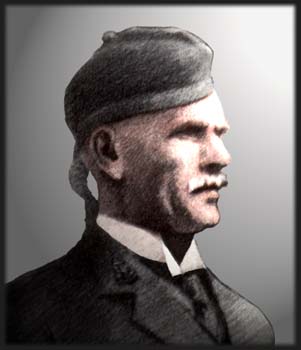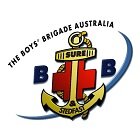History of The Boys’ Brigade (BB) started back in 1883 and is still as relevant today as it was when William Smith started the first group in his church in Glasgow, Scotland.
The BB Founder – Sir William Smith

Birth Place: Thurso, Scotland in 1845.
Knighted: July 1909.
Died: May 1914, London.
William Smith was born and lived in Thurso, a small country town, until his father died when he was thirteen. Being the eldest, William was shipped to Glasgow to work with his uncle as a whole sale merchant.
With a military heritage from his father and grandfather, it was only natural that William would soon join the Volunteers, similar to today’s Army Reserves. During this time he was also an active member at the Free College Church in Glasgow.
He married his first wife Amelia in 1884 who was a great support and contributor towards William’s work with BB. She died in 1898 leaving him to raise their two sons Stanley and Douglas. In 1906 he remarried, however his second wife died a year later.
William was knighted in 1909 for his work for the welfare of youth.
Humble but visionary, William worked tirelessly to grow BB until his death in 1914.
His vision had already spread to many countries including Australia and has endured through the many societal and technological changes that have occurred across the past century. That same vision endures in the hearts of many thousands of current leaders in the Movement across the globe.
Many millions of men across the generations attribute their life and their character to the formative development they received in their time in BB.
How it all Began
In 1883 in Glasgow, Scotland, a young Sunday School teacher, whose name was William Alexander Smith, was very worried that the Boys in his Sunday School class couldn’t seem to settle down enough for him to teach them about Jesus and how to be better people. They were bored and thought they were too old for Sunday School.
On Saturdays William Smith was an Officer in the Volunteers (like our Army Reserves today) and could get many men to do exactly as he wanted when he drilled them, but on Sundays he struggled to get the Boys in his class to settle down and work together. Then one day he had an idea. If the Boys in the Sunday School could be as well trained and behaved as his Volunteers through doing drill and other things, then he would be able to teach them how to get more out of life.
So The Boys’ Brigade was started and the first meeting was held on the 4th October, 1883. Boys enjoyed it so much, that soon other Companies were formed in Scotland and then spread to the rest of the world. But this movement was for Boys who were between 12 and 17, mainly because it was the age group that Mr Smith had in his Sunday School class.
When Mr. Smith, who was later knighted and became Sir William Smith, started the Boys? Brigade he chose as its emblem an Anchor and for its motto the words “Sure and Stedfast.”
A few years later another organisation was begun in England and it was called “The Boys’ Life Brigade,” which had as its emblem a Red Cross.
In 1926 both these organisations joined together and in addition they joined their emblems.
Younger Boys of course wanted to be part of BB also and do similar exciting activities. In September, 1917, a man called Carey Longmore, who was the Captain of the 1st Warley (Essex, England) B.B. Company, started a junior branch of his Company and these young Boys were called “The Boy Reserves.” The Boys’ Life Brigade also had a junior branch called “The Lifeboys”.
When the B.B. and the B.L.B. joined together as one organisation in 1926 it was decided to keep the name “The Boys’ Brigade,” and it was also agreed that the name of the junior branch should be “The Life Boys” spelt in three words. From 1926 to 1966 that was how the names remained, but it was then agreed that the whole of the movement should be known as The Boys’ Brigade and the name “The Life Boys” was dropped.
The B.B. has gone on expanding and growing and now there are nearly 5,000 Companies throughout the world.
Australian BB History
The Boys’ Brigade was first introduced into Australia well within a decade of the formation of the movement in Glasgow by the Founder. In 1890-91 a Company was formed at the St. Mark’s Church of England, Fitzroy in Melbourne. The next Company to be formed was at the Wesley Church, Perth in 1895 and this was very quickly followed by Companies in each of the other States on a fairly scattered basis. For instance in Queensland by the year 1899 there were Companies in Mackay, Townsville, Weipa, Aurukun, Charters Towers and Brisbane, whilst in New South Wales there were Companies in Richmond, Kurrajong, Bathurst and Cobar as well as in Sydney. In Tasmania by that year efficient Companies were operating in Launceston and Hobart.
To provide a more coordinated basis for growth an Australian Council was formed at the turn of the century, based in Sydney. The first Annual Report in 1900 noted that the Secretary knew of 15 Companies functioning with a membership of 431 Boys and 41Officers. The first Battalion Council (district grouping) was formed in Adelaide in 1901 and comprised four Companies.
In the early 1900s several Companies of the Naval Boys’ Brigade were formed, mainly in Victoria, and in 1907 separate Battalions of Military and Naval Companies were formed in that State. It appears that most of these Companies merged with the Government scheme of Military Training for Boys of 12 and upwards introduced in July, 1911, and as a result of this scheme plus the drain on leadership into the Armed Forces, few Companies survived the First World War.
There was one notable exception. In 1913 a new 1st Brisbane Company had been formed at the Ithaca Presbyterian Church, led by a Mr. George Orr a former Lieutenant of the 1st Glasgow Company under the Captaincy of Sir William Smith. The formation of this Company marked the commencement of the present era of The Boys’ Brigade in Australia.
In the years following the First World War, a former Captain of the 5th Dublin(Ireland) Company, Rev. J. Wesley-Smith, who had migrated to Western Australia, after correspondence with Mr. Orr, was instrumental in the formation of the 1st and 2nd Fremantle Companies at Fremantle Baptist Church and Wesley Church, Fremantle, respectively, and the 1st Northam Company at Northam Presbyterian Church in WA. It was not until 1929 that a new 1st Melbourne Company was formed at Armadale Baptist Church, Melbourne, and a new 1st Sydney Company was formed at Glebe Presbyterian Church, Sydney. Of these the 1st Brisbane is the only one still active and has reached its centenary in 2013.
No further Companies were formed in Queensland or Victoria up to the outbreak of the Second World War and in New South Wales growth was extremely slow, there being 18 Companies active in Sydney at that time. However, the immediate post-war years saw a rapid spread of the Movement so that we now have Companies in all States and Territories.
Another point of interest relating to the pre-Second World War years is that upon the Brigade becoming more active in New South Wales in the early 1930s it was pointed out that other non-uniformed Boys’ Organisations had been operating in Sydney and Adelaide for many years under the name The Boys’ Brigade and had been incorporated in those States as Limited Companies.
As a result, we no longer had the legal right to the use of the name The Boys’ Brigade in New South Wales and South Australia and agreed to use the name The British Empire Boys’ Brigade. In 1970 the Australian Council adopted the name The Boys’ Brigade Australia and the Movement is now known by that name in all States of Australia.
In 1948 the Overseas Committee of The Boys’ Brigade Executive Committee in London, appointed Robert McEwan (Captain 3rd Sydney Company) to act as Honorary Organiser for Australia and acting under this authority McEwan invited one Officer in each State to join him in what was called the Provisional Federal Advisory Committee (PFAC). This body continued to operate until 1955 when each State was invited to appoint two representatives to the Committee.
The enlarged PFAC paved the way for the formation of The Australian Council and on 1st January 1958, The Boys’ Brigade Australian Council was formally constituted. A fitting tribute was paid at this time to the oldest Company in Australia, the 1st Brisbane Company, when its Captain, Mr. R.H. Tait, was elected the first President of the Australian Council.
Today The Boys’ Brigade Australia is governed by a company limited by guarantee with representatives from each state and territory where BB exists forming the decision making body.
A Board of Directors is also elected by the membership to take care of the day-to-day needs of the Movement at national level.
A full History of The Boys’ Brigade in Australia is published in Boys, Urchins, Men by M.E. Hoare.

